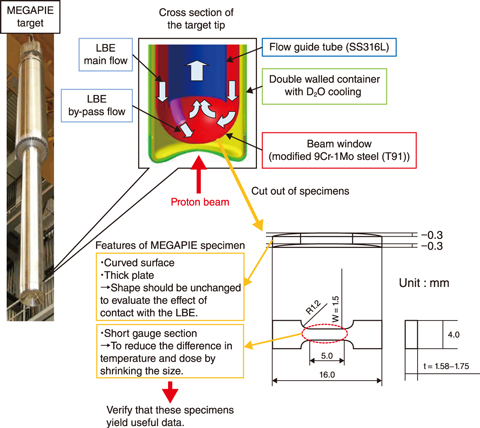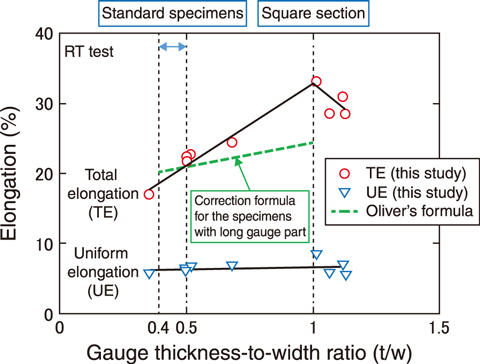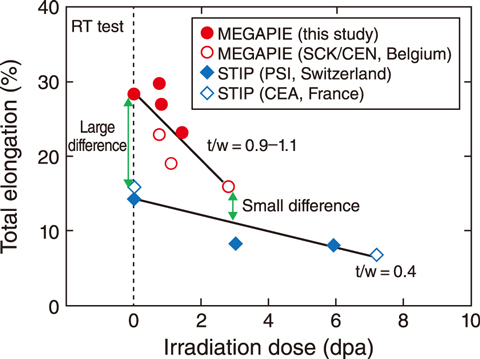
Fig.4-17 Overview of MEGAPIE (MEGAwatt PIlot Experiment) Irradiation

Fig.4-18 Relationship between the elongation of non-irradiated specimens and the gauge thickness-to-width ratio (t/w)

Fig.4-19 Relationship between the total elongation of irradiated specimens and irradiation dose
A beam window (BW) of an ADS is required to transmute long-lived radioactive nuclides contained in spent fuel using proton accelerators and is corroded by high-temperature lead-bismuth eutectic (LBE) alloys. The BW is located in a severe environment and can be seriously damaged by the irradiation of impinged protons and spallation neutrons. It is therefore necessary to understand the possible irradiation damage to the BW material. However, the number of facilities worldwide where experimental irradiation of BW materials under such a severe environment is limited. Thus, an international project entitled the Megawatt Pilot Experiment, i.e., MEGAPIE, was launched with an aim of constructing an irradiation database of candidate materials for ADSs.
As shown in Fig.4-17, the particle accelerator at Paul Scherrer Institute in Switzerland was used to irradiate the LBE flow protons. Post-irradiation examinations (PIEs), in which the specimens made of modified 9Cr-1Mo steel (T91) were cut from the beam window of the target to examine the changes of their mechanical properties, were shared by the participating countries. However, the shapes of the specimens in the PIEs were very different from those of standard specimens, i.e., the specimens were as twice thick as the standard ones, and specimens’ surfaces were curved. To verify whether useful data could be obtained from these differently shaped specimens, the effects of the shape on the tensile properties were studied systematically using non-irradiated specimens. Although prior researchers have investigated the impact of shape on tensile properties, the gauge the specimens in question have all been sufficiently long (l/w > 5.5, here, l is the lengths of the gauge sections); here, however, the gauge parts of the specimens obtained from MEGAPIE (l/w = 3.33) were rather short.
The results indicated that the strength and uniform elongation of the specially shaped specimens were similar to those of the standard specimens, but the total elongation was 1.5 to 2.0 times higher. Further, examination of the effects of the gauge thickness/width ratio (t/w) on the tensile properties indicated that the total elongation increased with increasing gauge thickness until t/w = 1, as shown in Fig.4-18. Known correction formulas for standard specimens (long gauge) could not be applied to these specially shaped MEGAPIE specimens. Regarding irradiated specimens, the reduction rate of the total elongation with increasing irradiation dose was higher than that of the standard specimens, as shown in Fig.4-19. Therefore, a correction formula considering both the difference in shape and the decrease of elongation due to irradiation was proposed.
When studying accelerator-irradiated materials such as those used in ADSs, specially shaped specimens are unavoidable; the proposed correction formula will thus be useful for future design of ADS materials and the PIE of irradiated materials.
In addition, no specific effects due to contact with the LBE was observed in this irradiation. Future work will consist of irradiation tests under higher temperatures for further investigation of ADS design.
(Shigeru Saito)
<Previous: 4-7 | Next: 5 Applied Neutron and Synchrotron Radiation Research and Development>